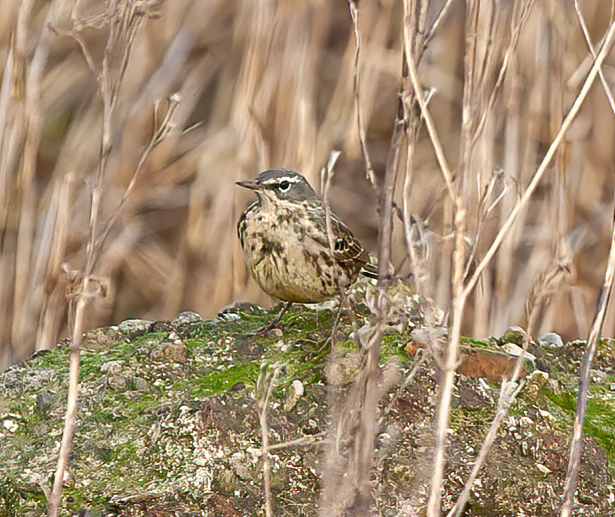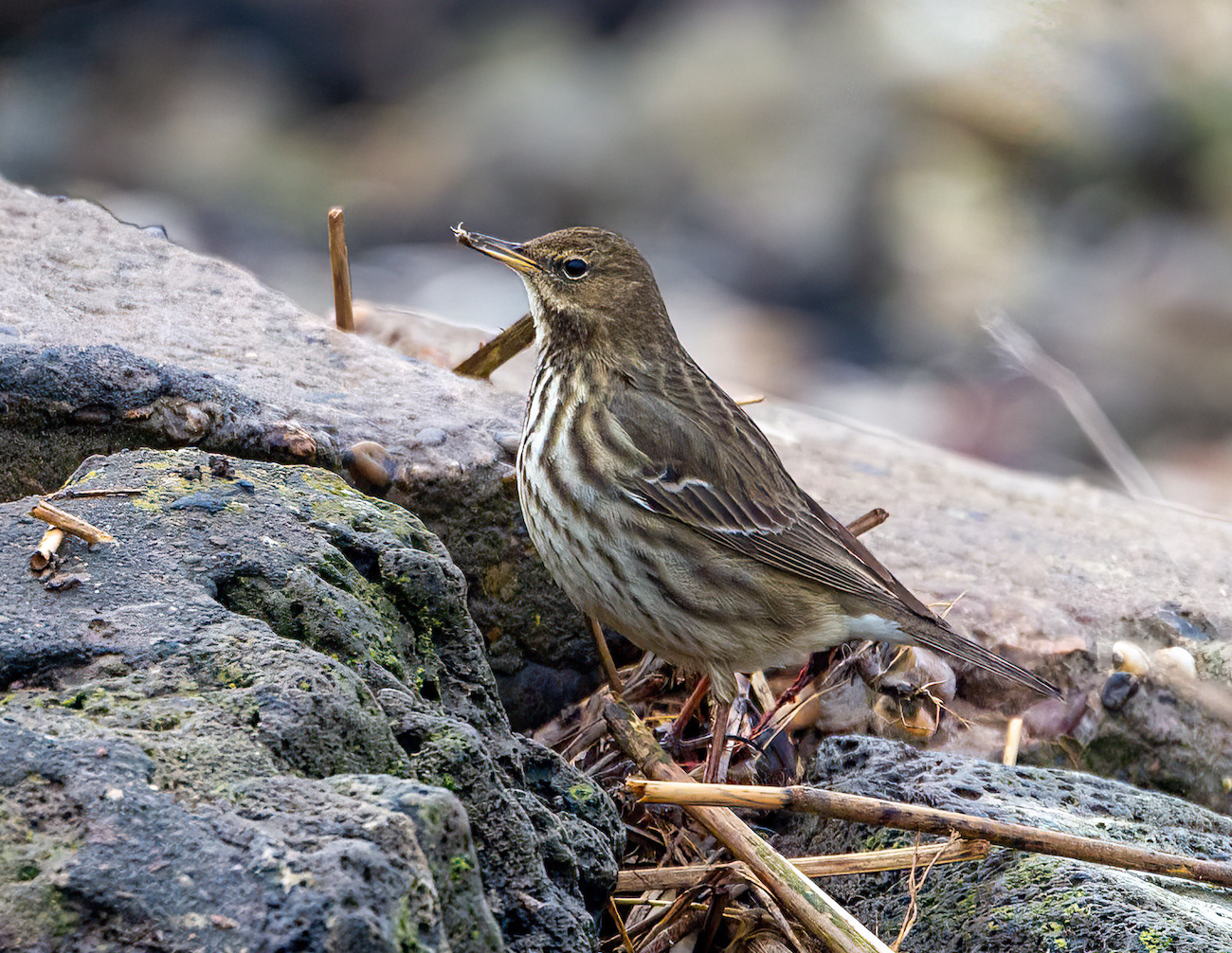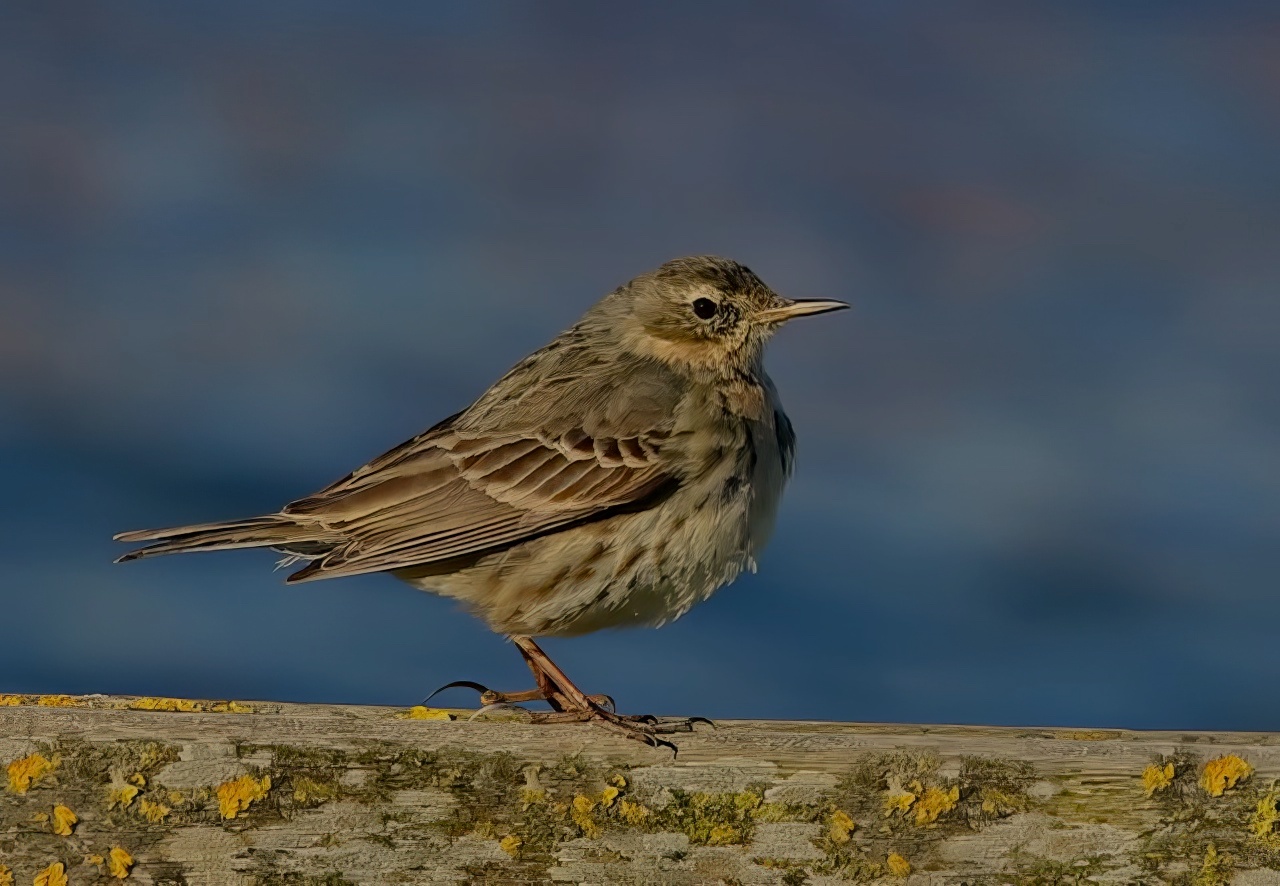Rock Pipit Anthus petrosus
Scandinavian Rock form littoralis a fairly common passage migrant and winter visitor September-April; scarce inland. Nominate British and Irish form essentially resident so probably a very scarce winter visitor.



The coastal saltmarshes between Tetney Marshes and Saltfleetby Theddlethorpe Dunes NNR are quite possibly the most important British wintering area for Scandinavian Rock Pipit based on the results reported in the BTO Atlas 2007-11. The latter site held 180 birds in December 2015. Birds tend to arrive from mid-September and there is pronounced autumn migration best witnessed at Gibraltar Point where regular visible migration watches are held. During October 2017 a total of 1969 birds was counted flying over heading south. Birds wintering on saltmarshes are hard to count accurately as they don't tend to flock up and are generally scattered in ones and twos over a wide area. The wintering population probably numbers several hundred. Few Rock Pipits have been ringed in the county but Norwegian colour ringed birds have been spotted at Barton upon Humber in October 2013; Pyewipe Marsh, Grimsby in January 2016; and Witham Mouth in October 2018. Inland records are very scarce with the concrete embankments at Covenham and Toft Newton Reservoirs the most usual places to turn one up.
(Account as per new Birds of Lincolnshire (2021), included December 2022)
